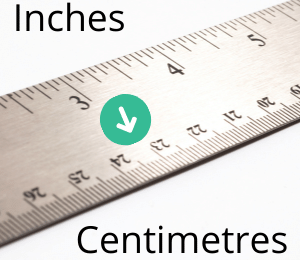When we think of fast and agile animals, cows might not be the first creatures that come to mind. Often associated with grazing peacefully in the fields, these gentle giants may not appear to possess the swiftness of a cheetah or the agility of a gazelle. However, if we delve deeper into the world of bovines, we discover that there’s more to these remarkable animals than meets the eye. Join us as we unveil the surprising speed of a cow and explore the factors that contribute to their astonishing agility.
Defying Expectations:
Cows may not have the reputation of being fleet-footed, but they are surprisingly swift when they need to be. While they don’t possess the explosive bursts of speed characteristic of some predators, cows are capable of achieving a respectable pace. On average, a cow can run at speeds of up to 20 to 25 miles per hour (32 to 40 kilometers per hour), depending on its breed and physical condition. This ability to gallop at such speeds is truly remarkable, considering their large size and heavy build.
Factors influencing speed of a cow:
Several factors contribute to the speed and agility of cows. Here are a few key considerations:
a. Breed: Different cow breeds vary in their physical capabilities, including speed. For instance, some breeds, like the Angus or Hereford, are known for their muscular builds and relatively fast speeds compared to other breeds.
b. Age and Health: Like any living creature, the age and overall health of a cow can affect its ability to run swiftly. Younger cows tend to be more active and agile, while older cows may experience a decline in their speed due to factors such as joint health or other age-related limitations.
c. Environment: The terrain and conditions in which a cow resides play a role in its speed. Cows that live in open fields or pastures with ample space to roam tend to have more opportunities to exercise and develop their agility compared to those confined to smaller spaces.
Purpose of Speed:
You might wonder why cows need to be fast in the first place. While their size and generally calm demeanor suggest otherwise, speed serves as a crucial survival mechanism for these herbivorous animals. When faced with a threat, such as a predator or an unexpected danger, the ability to run swiftly enables cows to escape harm’s way and protect themselves, their calves, and their herd.
Athletic Adaptations:
To achieve their surprising speed, cows have developed some remarkable anatomical adaptations. Their long legs, powerful muscles, and flexible joints allow them to generate the necessary force to propel their massive bodies forward. Moreover, their hooves provide excellent traction on various surfaces, enabling them to maintain stability while running.
The Joy of Cow Sports:
In recent years, cow-related sports and competitions have gained popularity in certain regions. Events like cow races or cow agility courses showcase the impressive athletic abilities of these animals. These activities not only provide entertainment but also help create awareness about the remarkable speed and agility that cows possess.
How to calculate the speed of a cow
Calculating the exact speed of a cow can be challenging since it depends on various factors such as breed, age, health, and environmental conditions. However, if you have access to certain measurements, you can estimate the speed of a cow using basic mathematical calculations. Here’s a simplified method you can follow:
- Measure the Distance: Choose a straight and relatively long track where you can observe the cow’s movement. Measure the distance of this track in meters or yards. For example, let’s assume the distance is 100 meters.
- Time the Cow: Using a stopwatch or a timer, measure the time it takes for the cow to cover the measured distance. Start the timer as soon as the cow begins moving and stop it as soon as it crosses the finish line. For instance, let’s say the cow completes the 100-meter track in 12 seconds.
- Convert Units (if necessary): If you measured the distance and time in different units, make sure to convert them to the same unit for accurate calculations. For example, if the distance is in yards and the time is in seconds, convert the distance to meters.
- Calculate Speed: To calculate the speed of the cow, use the formula: Speed = Distance ÷ Time. In our example, the distance is 100 meters, and the time is 12 seconds. Therefore, the speed would be 100 ÷ 12 = 8.33 meters per second.
Remember that this method provides an estimate and may not account for factors such as the cow’s initial acceleration or potential variations in its speed during the course. Additionally, different breeds or individual cows may have varying speeds, so results can vary accordingly.
It’s important to prioritize the safety of both yourself and the cow while conducting any measurements or observations.
Conclusion:
The next time you come across a cow grazing peacefully in a meadow, take a moment to appreciate the surprising speed and agility these creatures possess. While they may not challenge the world’s fastest land animals, cows can still reach impressive speeds when the need arises. Their ability to adapt and overcome physical constraints highlights the wonders of the animal kingdom and reminds us that there is much more to each species than meets the eye.
FAQs
Q: How fast can a cow run?
A: On average, a cow can run at speeds of up to 20 to 25 miles per hour (32 to 40 kilometers per hour), depending on factors such as breed, age, and overall health.
Q: Are all cow breeds equally fast?
A: No, different cow breeds have varying physical capabilities, including speed. Some breeds, such as Angus or Hereford, are known for their relatively faster speeds compared to others.
Q: Can a cow outrun a human?
A: In general, a cow can reach speeds that are faster than an average human can run. However, individual running speeds can vary, and factors such as terrain and distance can also affect the outcome.
Q: How does a cow’s speed compare to other animals?
A: Cows are not typically known for their exceptional speed compared to certain predators or highly agile animals. However, they can still achieve impressive speeds considering their large size and heavy build.
Q: Do cows always run at their top speed?
A: No, cows are not constantly running at their top speed. They usually graze and move at a leisurely pace, reserving their faster speeds for situations when they need to escape from a threat or danger.
Q: Are there any sports or competitions involving cow speed?
A: Yes, in some regions, cow-related sports and competitions have gained popularity. Events like cow races or cow agility courses showcase the speed and agility of cows and provide entertainment and awareness about their athletic abilities.
Q: How do environmental factors affect a cow’s speed?
A: Environmental factors such as the terrain, available space, and overall living conditions can influence a cow’s speed and agility. Cows that have ample space to roam and exercise are more likely to develop their speed and agility compared to those in confined spaces.
Q: Can the speed of a cow be accurately measured?
A: Measuring the exact speed of a cow can be challenging due to various factors and the nature of the animal. However, estimations can be made by measuring the time it takes for a cow to cover a known distance and using basic mathematical calculations. These estimations provide a rough idea of a cow’s speed.



